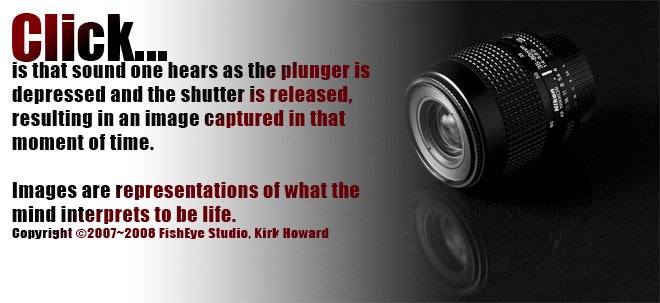Taking pictures can be difficult enough with lighting, proper exposer, focus, subject matter and the list goes on. Going to a
public aquarium in very dim light without the use of a tripod doesn't make it easier.
My wife and I recently went to the Monterey Bay Aquarium. I took my camera gear with me to try and capture images of the life in the aquarium. While there was much to see and to photograph trying to capture the best image is a challenge.
First the M.B.A. doesn’t allow tripods or monopods into the building. The reasons for this are clear. Can you imagine with all the visitors to the aquarium, gawking at all the displays and then have some photographer(s) setup a tri-pod in front of said display. It would be a mess. People kicking the legs of the tripod, gear crashing to the floor. It would be complete chaos.
 Some displays in the aquarium won’t allow use of a flash. In the large display tanks the M.B.A. discouraged the use of flash, because it drove the large pelagics to the rear of the tank. It seems the bigger fish are camera shy.
Some displays in the aquarium won’t allow use of a flash. In the large display tanks the M.B.A. discouraged the use of flash, because it drove the large pelagics to the rear of the tank. It seems the bigger fish are camera shy.
This is what I recommend for taking photographs in an aquarium setting:
1. Use the highest speed wide angle zoom you have access to. I used my Nikkor 18~70mm f3.5-4.5. I found this lens was not fast enough. I could have used my Nikkor fixed 50mm f1.8, but the wide angle wouldn’t be enough to allow the coverage of most display tamks.
2. Increase your ISO between 400 to 800. The higher your ISO the more digital noise will be seen on the image.
3. Use an off camera flash when possible. I used my Nikon SB-600 strobe. I had it hand-held and tethered to the camera. This gave me the ability move the strobe around the outside of the tanks to shoot through the glass and minimize the amount of reflection back into the lens. For more information on use of off camera flash, read the Strobist.
 4. Also to help minimize the light being reflected into the lens (lens flare), I recommend a soft rubber lens hood. not only will his help eliminate lens flare, this will also give you a very soft seal when you push the lens up to the aquarium glass. I purchased a rubber lens hood for less the $10.00.
4. Also to help minimize the light being reflected into the lens (lens flare), I recommend a soft rubber lens hood. not only will his help eliminate lens flare, this will also give you a very soft seal when you push the lens up to the aquarium glass. I purchased a rubber lens hood for less the $10.00.
To be continued…
 Some displays in the aquarium won’t allow use of a flash. In the large display tanks the M.B.A. discouraged the use of flash, because it drove the large pelagics to the rear of the tank. It seems the bigger fish are camera shy.
Some displays in the aquarium won’t allow use of a flash. In the large display tanks the M.B.A. discouraged the use of flash, because it drove the large pelagics to the rear of the tank. It seems the bigger fish are camera shy.This is what I recommend for taking photographs in an aquarium setting:
1. Use the highest speed wide angle zoom you have access to. I used my Nikkor 18~70mm f3.5-4.5. I found this lens was not fast enough. I could have used my Nikkor fixed 50mm f1.8, but the wide angle wouldn’t be enough to allow the coverage of most display tamks.
2. Increase your ISO between 400 to 800. The higher your ISO the more digital noise will be seen on the image.
3. Use an off camera flash when possible. I used my Nikon SB-600 strobe. I had it hand-held and tethered to the camera. This gave me the ability move the strobe around the outside of the tanks to shoot through the glass and minimize the amount of reflection back into the lens. For more information on use of off camera flash, read the Strobist.
 4. Also to help minimize the light being reflected into the lens (lens flare), I recommend a soft rubber lens hood. not only will his help eliminate lens flare, this will also give you a very soft seal when you push the lens up to the aquarium glass. I purchased a rubber lens hood for less the $10.00.
4. Also to help minimize the light being reflected into the lens (lens flare), I recommend a soft rubber lens hood. not only will his help eliminate lens flare, this will also give you a very soft seal when you push the lens up to the aquarium glass. I purchased a rubber lens hood for less the $10.00.To be continued…




1 comment:
Sweet. I've got an aquarium here in VB and might try to get a decent shot this time.
Thanks!
Taylor
Post a Comment